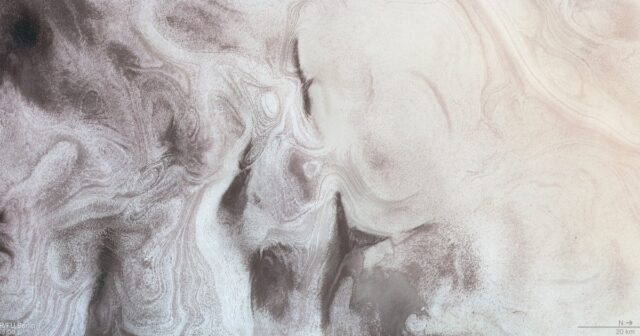As many people gear up for the festive period, they might be hoping for a white Christmas in their local area. but Along those lines, the European Space Agency (ESA) is showing its festive spirit with an image of a white Christmas on Mars.
This cozy image was taken by ESA’s Mars Express, a spacecraft orbiting the planet that has a high-definition camera on board that takes photos of the planet’s surface. The image was captured by Mars Express’ High Resolution Stereo Camera (HRSC) in the Australe Scopuli region in Mars’ southern hemisphere in June 2022, but has only just been released as a festive celebration.
While we think of Mars as the red planet due to the rust-colored dust that covers most of the planet — technically called regolith — there are also large areas that are covered in ice and snow. There is very little liquid water on Mars, but there is plenty of frozen water, especially near the poles. The swirling shapes seen in the image are the result of layers of snow and ice that have formed over the hills in this region.
Please enable Javascript to view this content
In Mars’ southern hemisphere, though, it isn’t winter time — rather, summer has almost arrived. And the increasing warmth of the sun is shaping these ice layers further.
“When sunlight shines through the translucent top layers of the carbon dioxide ice, it warms up the underlying surface,” ESA explains. “The ice at the bottom of the layer begins to sublimate, creating pockets of trapped gas. The pressure builds up until the overlying ice suddenly cracks, resulting in a burst of gas jetting through the surface. These gas fountains carry dark dust from below, which falls back to the surface in a fan-shaped pattern molded by the direction of the prevailing wind. The fans can range in length from tens to hundreds of meters.”
This sublimation (where material goes directly from solid to gas, bypassing the liquid stage) has already been occurring, as you can see from the dark patches near the bottom of the image. In these areas, the ice has sublimated away to reveal the darker material beneath.
If you happen to have a pair of 3D glasses, you can also see a stereoscopic version of this image on the ESA’s website.

















































